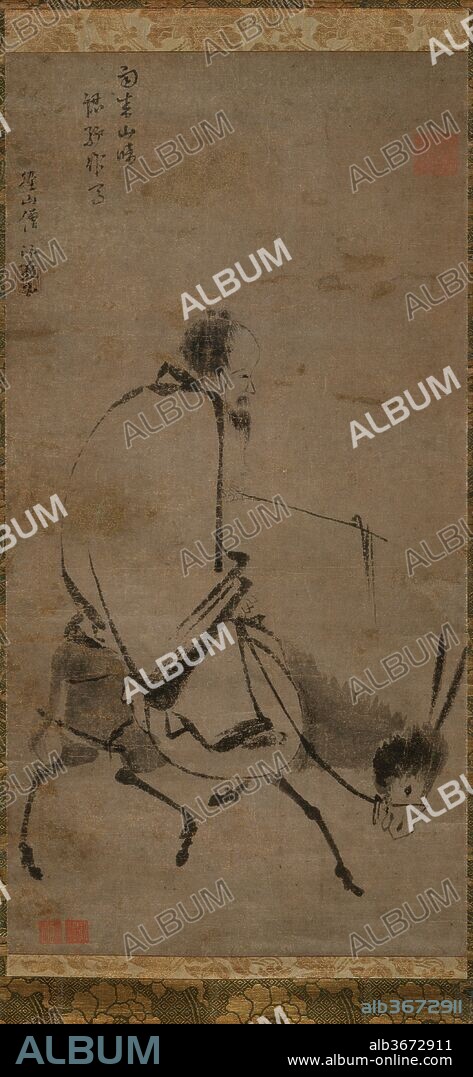alb3672911
UNIDENTIFIED ARTIST CHINESE, ACTIVE MID-13TH CENTURY. Chan master riding a mule

|
Zu einem anderen Lightbox hinzufügen |
|
Zu einem anderen Lightbox hinzufügen |



Haben Sie bereits ein Konto? Anmelden
Sie haben kein Konto? Registrieren
Dieses Bild kaufen

Titel:
Chan master riding a mule
Untertitel:
Siehe automatische Übersetzung
Chan master riding a mule. Artist: Unidentified Artist Chinese, active mid-13th century. Culture: China. Dimensions: Image: 25 1/4 in. × 13 in. (64.1 × 33 cm)
Overall with mounting: 58 1/4 × 13 1/2 in. (148 × 34.3 cm)
Overall with knobs: 58 1/4 × 15 1/4 in. (148 × 38.7 cm). Date: before 1249.
Painted in a few swift brushstrokes and deftly applied ink washes, Chan Master Riding a Mule exemplifies the freely expressive manner of Chan (Zen, in Japanese) Buddhist painting, which relies less on descriptive detail than on the capturing of spiritual concentration within the artist to achieve a vivid depiction. Inscribed by the noted Chan master Wuzhun, to whom it traditionally has been attributed, the painting is probably the work of a contemporary Chan artist following the sketchy brush style of Liang Kai (active first half of the thirteenth
century).
Wuzhun, well known for his wisdom as well as for his eccentric behavior, inscribed this painting while he was living at the Qingshansi, a Chan temple near Hangzhou, where he settled after he was rewarded by Emperor Lizong (r. 1225-1264) following an imperial audience. The rider's facial features-prominent forehead, mustache, and wispy beard-are not unlike those of Wuzhun himself, whose formal portrait, with an inscription by him dated 1238, is now in the Tofuku-ji temple in Kyoto. His laconic inscription may also be a self-deprecatory reference to himself:
As rain darkens the mountain,
One mistakes a mule for a horse.
Technik/Material:
Hanging scroll; ink on paper
Zeitraum:
Southern Song dynasty (1127-1279)
Museum:
Metropolitan Museum of Art, New York, USA
Bildnachweis:
Album / Metropolitan Museum of Art, NY
Freigaben (Releases):
Model: Nein - Eigentum: Nein
Rechtefragen?
Rechtefragen?
Bildgröße:
2106 x 4556 px | 27.5 MB
Druckgröße:
17.8 x 38.6 cm | 7.0 x 15.2 in (300 dpi)
Schlüsselwörter:
 Pinterest
Pinterest Twitter
Twitter Facebook
Facebook Link kopieren
Link kopieren Email
Email
